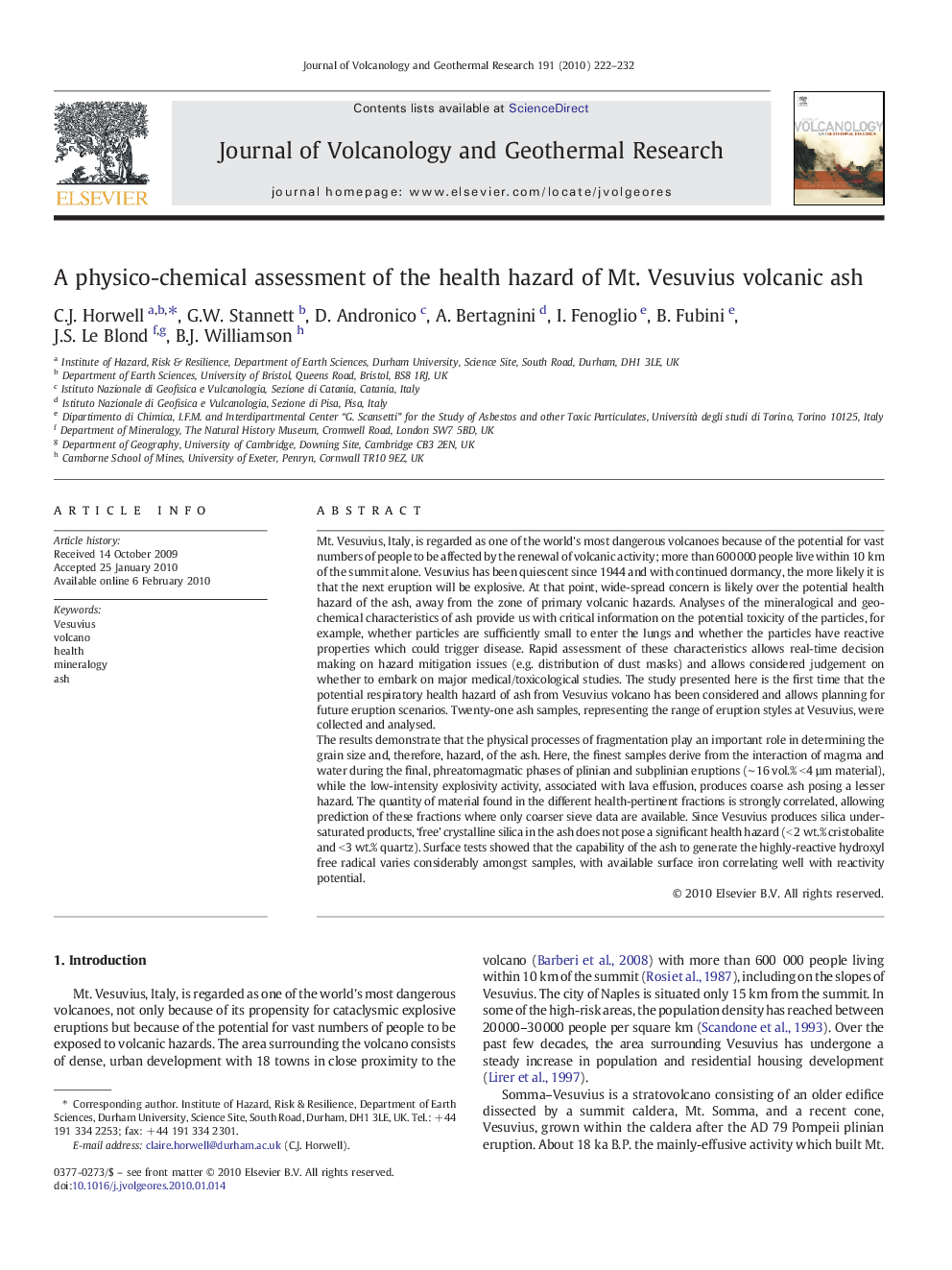| Article ID | Journal | Published Year | Pages | File Type |
|---|---|---|---|---|
| 4714030 | Journal of Volcanology and Geothermal Research | 2010 | 11 Pages |
Abstract
The results demonstrate that the physical processes of fragmentation play an important role in determining the grain size and, therefore, hazard, of the ash. Here, the finest samples derive from the interaction of magma and water during the final, phreatomagmatic phases of plinian and subplinian eruptions (â¼Â 16 vol.% <4 µm material), while the low-intensity explosivity activity, associated with lava effusion, produces coarse ash posing a lesser hazard. The quantity of material found in the different health-pertinent fractions is strongly correlated, allowing prediction of these fractions where only coarser sieve data are available. Since Vesuvius produces silica under-saturated products, 'free' crystalline silica in the ash does not pose a significant health hazard (< 2 wt.% cristobalite and <3 wt.% quartz). Surface tests showed that the capability of the ash to generate the highly-reactive hydroxyl free radical varies considerably amongst samples, with available surface iron correlating well with reactivity potential.
Keywords
Related Topics
Physical Sciences and Engineering
Earth and Planetary Sciences
Geochemistry and Petrology
Authors
C.J. Horwell, G.W. Stannett, D. Andronico, A. Bertagnini, I. Fenoglio, B. Fubini, J.S. Le Blond, B.J. Williamson,
